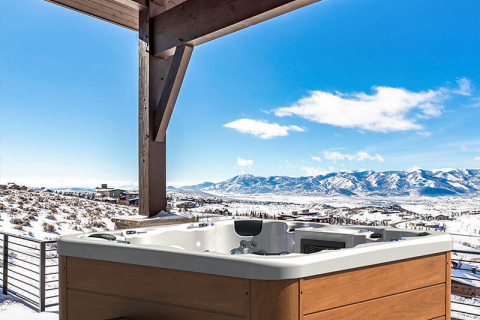
- Home
- >
- News
- >
- Industry news
- >
News
First of all, it is clear that an outdoor jacuzzi bathtub can be used in winter, and this experience is very pleasant for many people. Outdoor jacuzzi bathtubs are usually designed to cope with various extreme climates, including cold winters.
Jacuzzi therapy is a treatment method based on hydrotherapy, which uses warm water and water flow in jacuzzi bathtubs to perform specific treatments on the body. It combines physical factors such as thermotherapy, hydromassage and buoyancy to promote the recovery of the body, relieve pain, increase blood circulation
Generally, the chlorine concentration in the outdoor hot bathtub should be kept between 3 and 5 ppm (parts per million). Higher concentrations may be harmful to the human body. If a high dose of chlorine is used during shock treatment, the waiting time may need to be extended, even to several hours.
The water temperature of outdoor hot bathtubs is usually higher, usually maintained at around 37°C to 40°C. While these temperatures are ideal for relaxation and muscle tension relief, they are also ideal for the growth of certain bacteria and microorganisms.
The balance of chemicals is very important for the water quality of the outdoor hot bathtub. If the concentration of chemicals in the water is too high, especially when it comes to foaming agents and lubricants, the water will produce more foam under the impact of the strong water flow of the jet.
For families with small courtyards, you can consider choosing a 2-3 seater bathtub. These spa massage bathtubs are generally around 130cm x 130cm in size, which is relatively compact and can save space without sacrificing comfort.
Some modern high-efficiency spa bathtubs use higher-power heating systems (above 4 kilowatts), which can greatly shorten the heating time, usually taking 2-4 hours to heat the water to the ideal temperature.
Swimming with Swim Spa can consume a lot of energy, especially the intensive swimming training conducted by the strong water flow system, which can promote fat burning and calorie consumption. It is estimated that swimming in a Swim Spa for 40 minutes can consume about 400-500 calories, which is more efficient than some traditional fitness activities such as running and aerobics.
Once the power goes out, the first thing to do is to ensure that all electrical equipment in the outdoor whirlpool bathtub is turned off to avoid current surges or system damage after the power is restored.
Generally speaking, the price range of swim spas is wide, ranging from about $10,000 at the low end to $30,000 or even higher at the high end. The price of hot bathtub is relatively affordable, with low-end products ranging from about $2,000 to $5,000, while high-end hot bathtubs usually cost no more than $10,000.
If you choose to place a whirlpool bathtub on concrete paving tiles, the first consideration is to ensure a stable foundation. In order to improve the bearing capacity and stability of the ground, it is usually necessary to add a solid foundation to the bricks.
Power supply problem is one of the common reasons why outdoor whirlpool tubs cannot start. If the power supply to the whirlpool tub is out of power, the entire device will not work properly. Users first need to check the power outlet, switch and circuit fuse to ensure that the power supply is normal.












